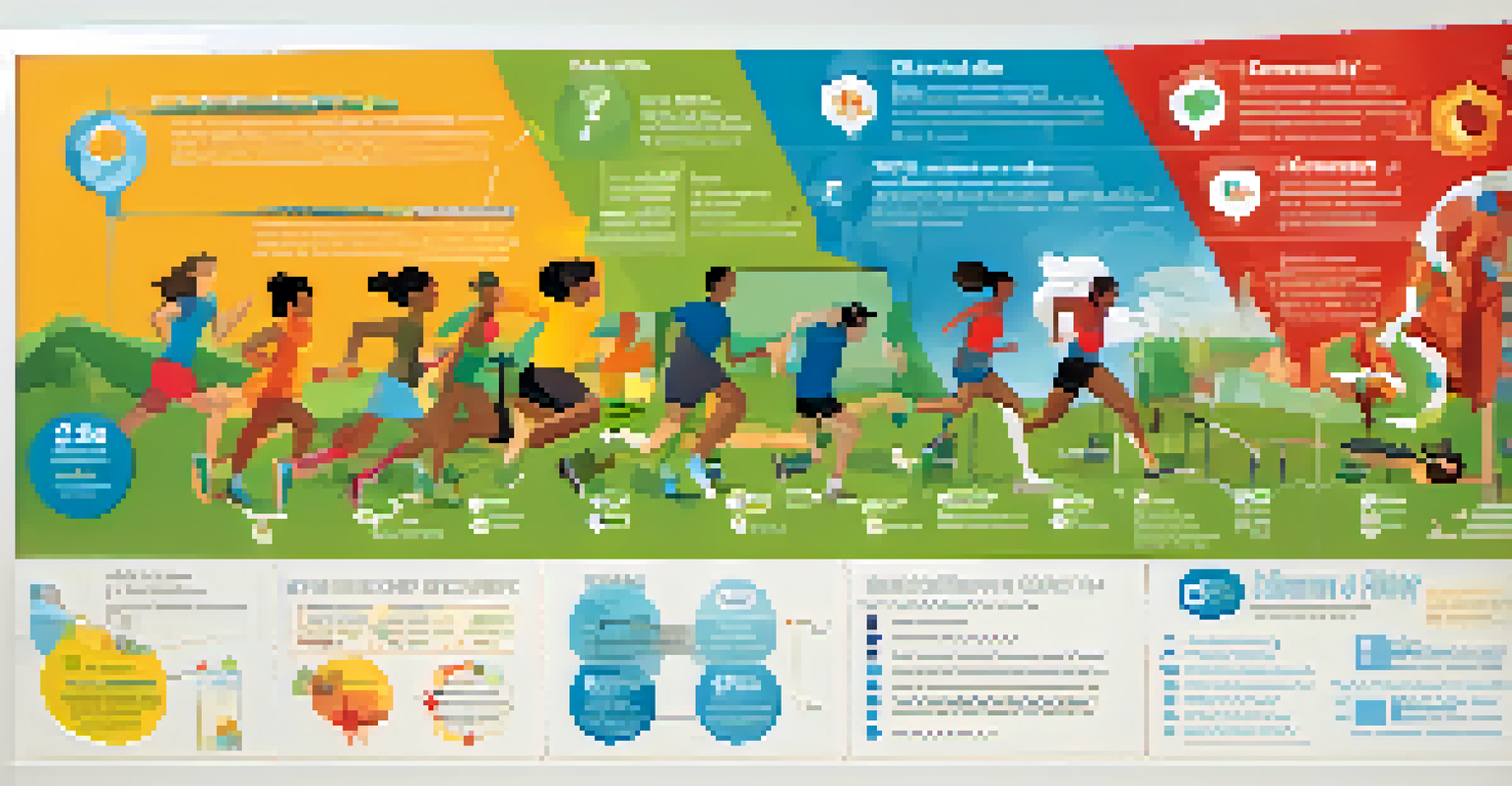Community Health Education: Strategies for Effective Outreach

Understanding Community Health Education and Its Importance
Community health education focuses on empowering individuals to make informed health choices. By increasing awareness about health issues, communities can foster healthier lifestyles and reduce disease prevalence. This education is essential because it not only informs but also equips people with the tools to advocate for their own health needs.
An ounce of prevention is worth a pound of cure.
For instance, a community that knows about the benefits of vaccinations can increase immunization rates, leading to herd immunity. This collective understanding can significantly diminish outbreaks of preventable diseases. Ultimately, the goal is to create a culture where health education is valued and prioritized.
Moreover, community health education can bridge gaps in access to healthcare services. When individuals are informed, they are more likely to seek preventive care and understand the importance of regular check-ups, which can lead to early detection of health issues.
Identifying Target Audiences for Effective Outreach
Understanding your audience is the cornerstone of effective community health education. Different demographic groups have unique health concerns and learning preferences, making it crucial to tailor your outreach efforts. For example, strategies that work for young adults may not resonate with older adults.

Conducting surveys or focus groups can help identify the specific health topics that matter to your community. This approach not only ensures relevance but also fosters a sense of ownership among community members. When people feel that their input shapes the education they receive, they are more likely to engage with the content.
Empower Through Health Education
Community health education empowers individuals to make informed health choices and advocate for their health needs.
Additionally, segmentation of your audience allows for targeted messaging. For instance, using social media to engage younger populations while organizing in-person workshops for older adults can optimize the effectiveness of your outreach strategies.
Utilizing Multiple Channels for Outreach
To maximize outreach, it's essential to use a variety of communication channels. Different people consume information in different ways, so leveraging multiple platforms ensures that your message reaches as many individuals as possible. This could include social media, community newsletters, workshops, and local events.
Education is the most powerful weapon which you can use to change the world.
For instance, a local health fair can provide an opportunity for face-to-face interaction and hands-on education, while social media campaigns can engage a broader audience quickly. Combining these approaches creates a multifaceted strategy that can effectively raise awareness and encourage participation.
Moreover, utilizing local influencers or organizations can help amplify your message. Collaborating with trusted community figures can lend credibility to your outreach efforts and encourage more individuals to participate.
Creating Engaging Educational Materials
Engaging educational materials are key to capturing the attention of your audience. This can include visually appealing brochures, infographics, and videos that simplify complex health information. The more relatable and visually stimulating your materials, the more likely they are to be shared and discussed.
For example, an infographic outlining the importance of regular exercise can be more impactful than a lengthy report. Using clear language and relatable examples helps demystify health topics, making them accessible to everyone, regardless of their background.
Tailor Outreach to Audience
Understanding and segmenting your audience allows for tailored outreach strategies that resonate with different demographic groups.
Additionally, involving community members in the creation of these materials can enhance their relevance. When individuals see their own stories and experiences reflected in educational content, it fosters a deeper connection and encourages further engagement.
Implementing Interactive Workshops and Activities
Interactive workshops can transform passive learning into active participation, fostering a deeper understanding of health topics. By engaging participants in hands-on activities, such as cooking demonstrations or fitness classes, you create memorable experiences that reinforce learning. This interactive approach can lead to lasting behavior change.
For instance, a cooking class focused on healthy meal preparation not only teaches participants how to cook but also emphasizes the importance of nutrition. Such activities encourage participants to practice what they learn in their daily lives, making health education more impactful.
Moreover, incorporating feedback mechanisms during these workshops allows for continuous improvement. Understanding what participants enjoyed or found challenging can help refine future sessions and make them even more effective.
Building Partnerships with Local Organizations
Collaborating with local organizations can significantly enhance your outreach efforts. These partnerships can provide additional resources, expertise, and credibility to your community health education initiatives. For instance, teaming up with schools, churches, or non-profits can help you tap into existing networks and reach a broader audience.
Local organizations often have established relationships within the community, which can facilitate trust and engagement. When community members see familiar faces involved in health education efforts, they may be more inclined to participate and value the information being shared.
Collaborate for Greater Impact
Building partnerships with local organizations enhances credibility and extends the reach of community health education initiatives.
Additionally, these partnerships can lead to shared events and initiatives that amplify your reach. Whether it’s co-hosting health fairs or participating in community celebrations, collaboration can create a more significant impact together than working in isolation.
Evaluating Outreach Effectiveness and Making Adjustments
Evaluating the effectiveness of your outreach strategies is crucial to ensure they meet community needs. By collecting data, such as participant feedback or health outcome metrics, you can assess what works and what doesn’t. This evaluation process allows you to celebrate successes while identifying areas for improvement.
For example, if a workshop consistently receives low attendance, it may indicate a need to reconsider the timing, location, or promotion strategies. Gathering insights from participants can provide valuable information on how to enhance future sessions and better engage the community.

Moreover, adapting your outreach based on evaluation findings demonstrates responsiveness to community needs. When people see that their feedback leads to tangible changes, they are more likely to continue participating and supporting your health education efforts.
Fostering a Culture of Health within the Community
Ultimately, the goal of community health education is to foster a culture of health. This involves not only providing information but also encouraging ongoing dialogue about health issues within the community. Creating a supportive environment where health is prioritized can lead to sustained behavior changes and improved overall well-being.
Community events, health challenges, and ongoing educational programs can help keep health topics at the forefront of community conversations. For example, organizing a monthly health challenge encourages individuals to adopt healthier habits collectively while fostering camaraderie.
Moreover, celebrating health milestones and successes within the community reinforces the importance of health education. Recognizing individuals or groups who make healthy lifestyle changes can inspire others to follow suit, creating a ripple effect that benefits everyone.